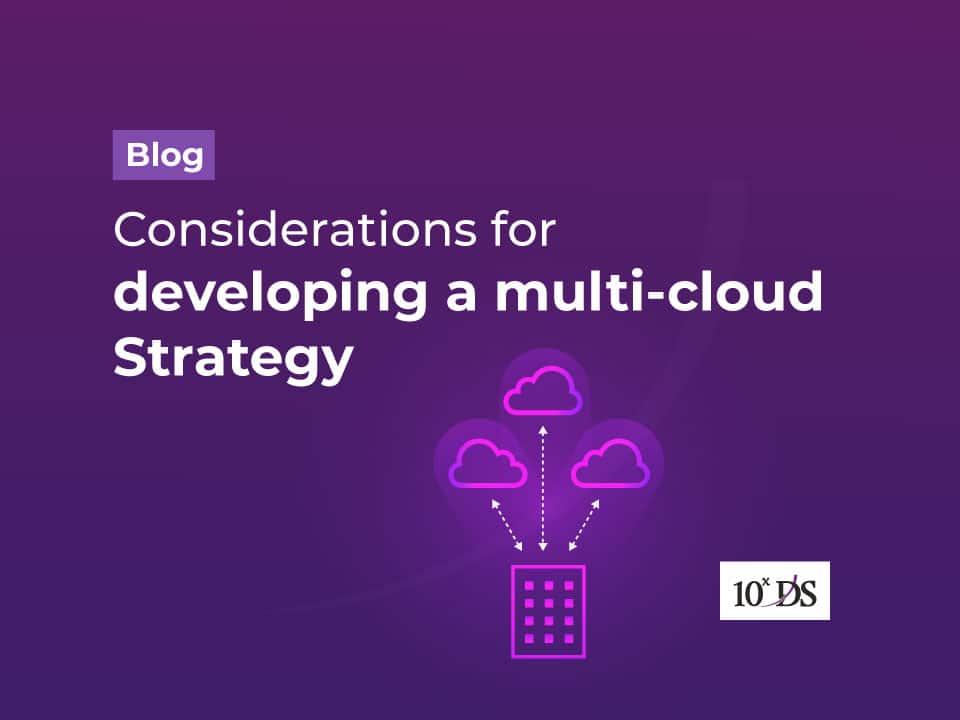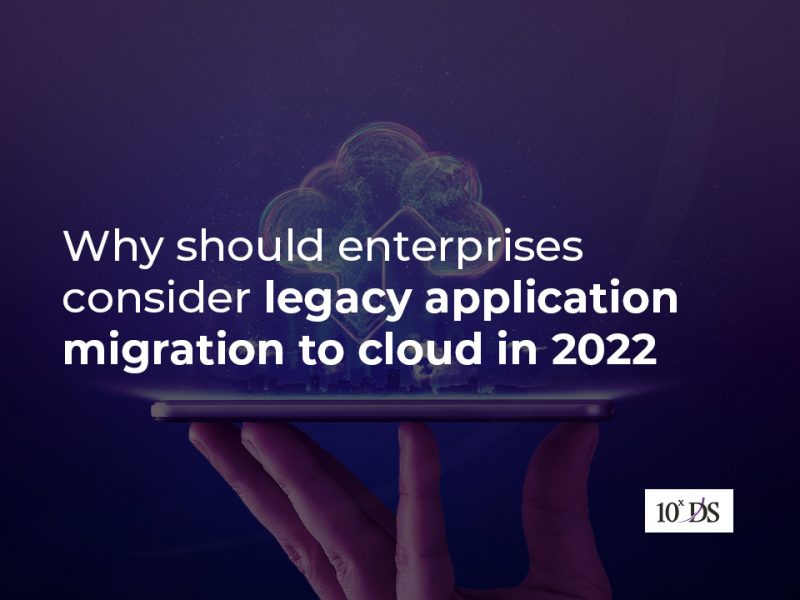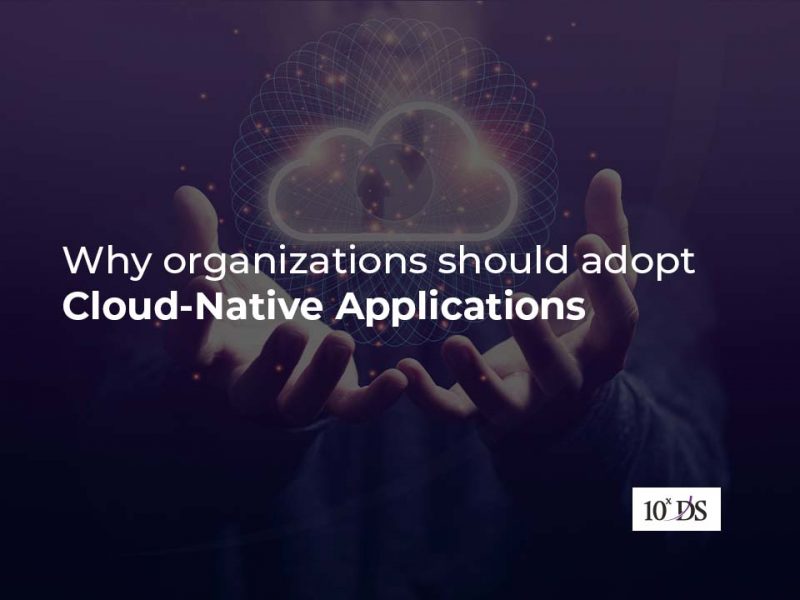
Considerations for developing a multi-cloud Strategy
Over the past few years, advancements in IT have led to more potent and versatile cloud computing, more robust software, improved analytics, mobility, and sensors. If only the majority of business IT suppliers were up to speed. Because of their background in the days of proprietary systems, higher switching costs, and vendor lock-in, the current establishment views the world in very specific ways.
One prime example is the current trend in cloud transformation towards hybrid and multi-cloud solutions. Users can take advantage of fresh approaches to processing, storing, and analysing data, and existing resources can be better utilised thanks to cloud management tools. This is not speculation but rather an established fact. According to Gartner, 81 percent of businesses use partnerships with multiple public cloud providers. More and more businesses are seeing the benefits of the multi-cloud strategy, in which they can choose from a number of different cloud services rather than being limited to just one.
Yet, the cost of a single-cloud stack can be prohibitive. Each cloud’s unique strengths are at risk of being undermined by rising complexity and the proliferation of closed, proprietary systems. In isolated data sets, perhaps more can be learned. Areas with multiple potentially robust systems are hotspots for danger. Constraints exist in potential hotspots for creativity and productivity. Even if all of your assets could be seen at once, you still might not have any say over them, your security might be a mess, and your costs would be impossible to pin down.
Without further ado, let’s look at multi-cloud strategy and the factors to consider when creating an IT strategy.
What is multi-cloud, and why use it?
There have been two major movements in cloud computing over the past 15 years that have facilitated the shift to a multi-cloud strategy. To begin, the “Big Three” of Amazon Web Services, Google Cloud Platform, and Microsoft Azure are no longer the exclusive options for IT departments considering a cloud migration. Since Amazon Web Services’ 2006 launch, a specialised infrastructure as a service (IaaS) provider has emerged to compete with the Big Three, giving organisations more options for multi-cloud installations.
Several companies have made substantial investments in cloud migration in the decade after AWS’s introduction. Thus, modern startups rely on cloud-native services, while more established enterprises are ready to make the most of their cloud installations.
The use of many cloud providers, or “multi-cloud,” is a method of using cloud computing. While the term “multi-cloud deployment” can be used to describe the use of any number of different SaaS or PaaS cloud offerings, it is most commonly used to describe the use of more than one public IaaS provider, such as Amazon Web Services and Microsoft Azure.
Many current multi-cloud installations are driven by business and technical goals in addition to worries about vendor lock-in and redundancy. One way to achieve these goals is to switch to a more cost-effective cloud service provider or to take advantage of the superior speed, storage capacity, or other features offered by a regional or national cloud service provider.
Several cloud services, either public or private, work together to form a multi-cloud system. The term “multi-cloud” refers to a set of interconnected cloud infrastructures that may or may not share any data or applications with one another. Several cloud environments operate together in a fluid manner to facilitate the movement of data and workloads between them.
Several factors have contributed to multi-cloud’s rise in popularity:
- Multi-cloud’s application is to help businesses cut costs and prevent them from being dependent on any one cloud service provider. By operating on and integrating with several clouds, you can shift your workloads to the service with the lowest total cost of ownership.
- An increasing number of businesses are deploying software without informing or receiving approval from the company’s central IT department. Inadvertently creating a multi-cloud environment is the result of many shadow deployments on public clouds.
- Cloud capabilities vary from provider to provider and platform to platform, which means that some workloads and projects within an organisation may not be well-suited to the cloud. With time, it becomes difficult to satisfy everyone by using a single cloud service or a single private cloud technology.
- In terms of geography, it’s important to note that every public cloud service maintains its own network of data centres in various places across the world. Running workloads in specific regions provided by multiple cloud providers may be advantageous if you need them to be close to specific branch offices or end-users.
- Having redundancy in the form of different clouds can help your company weather disruptions caused by cloud provider-specific outages or setup problems and keep operations running smoothly.
There are companies that prefer multi-cloud architectures because they want to maintain control over their data. A company’s data has to be stored in a certain way because that’s how the law, the rules, and the policies dictate it should be handled. Multi-cloud computing can let businesses accommodate client preferences for certain data centre locations or availability zones offered by several IaaS providers. Businesses can take advantage of cloud data sets’ portability by locating them as close to their end users as possible, maximising speed and minimising latency.After the on-premises infrastructure is in the cloud, they may focus on tailoring their cloud environments to maximise the benefits of a multi-cloud strategy.
Let’s take a look at what matters most and the considerations as you work to develop a multi-cloud management approach and strategy.
1. Confinement to One Supplier
Because of the risks associated with being locked in with a single cloud provider, a multi-cloud approach is increasingly being adopted. Hence, workloads can be moved depending on which provider offers the most cost-effective model for the required resources or has access to the software that will allow for the most efficient use of those resources. Yet, strategically speaking, this changes the dynamic by shifting the power dynamic away from the provider and towards you.
You will have more leverage to negotiate a custom price plan or other benefits if you are an enterprise-level user. In addition, your cloud service provider will not pose as a potential weak link.
While it’s true that vendor lock-in “should be avoided if feasible,” there are times when it’s not possible or desirable to do so. By designing for and running workloads on a single IaaS platform, you may optimise those workloads to make the most of that platform’s native tools and capabilities. As we’ll go over in greater detail in the next section, this means that worries about vendor lock-in may be overblown.
2. The amount of money you save ought to be greater than the amount you spend.
A larger investment of time and money is required up front when developing cloud-agnostic apps as part of a multi-cloud approach. It is more labor-intensive and calls for specialised training and experience. Cloud-agnostic workloads and applications are also uncommon; often, some sort of adaptation or fine-tuning is required.
But the potential savings from avoiding far larger expenses and headaches in the future make the upfront allocation of additional resources worthwhile. Moving workloads to the cloud provider that offers the best price for feature balance for a particular workload at any given moment may result in considerably greater savings than the additional initial development cost, at least up to a certain scale.
3. Create a rehabilitation plan.
Establishing redundancy and making contingency plans are two of the most important advantages of operating a multi-cloud solution. Modern IT organisations use a 3-2-1 backup strategy, which involves keeping three copies of their data on two different media types and storing one copy off-site. The other two copies, thanks to the development of 3-2-1, are kept locally to allow for speedy recoveries.
As cloud services have developed, the need for a local backup has grown in importance. As data can be restored just as quickly from the cloud as from on-premises equipment, many companies no longer employ physical infrastructure. The danger of keeping both production and backup copies with a single provider is reduced when data is maintained across many public clouds, which is a good strategy for businesses that are transitioning to or are already operating as cloud-native services. If a disaster or ransomware attack occurs, the multi-cloud solution may also retrieve data from a second, separate cloud environment.
4. Data governance legislation
Laws have been enacted in certain regions to regulate the storage and transfer of personal information. Companies that must follow these data residency laws may adopt a multi-cloud strategy to guarantee that their data is in accordance with the law. They use a number of different public cloud providers, each with a different range of available locations for off-site data storage.
5. Cut down on delays and unavailability.
Because of the redundancy and redistribution that a multi-cloud architecture provides, catastrophic app downtime is never an issue. If the primary cloud has problems processing a service, such as an online shopping transaction, a secondary cloud can step in as a “failover alternative” and take over the service’s processing. When the original cloud resumes normal operations, the jobs may be automatically transferred back to it.
However, catastrophic outages do occur, albeit rarely. Every service provider faces the possibility of having their operations disrupted by outages of varying severity. If it is critical that an app maintain near-perfect availability at all times, then multi-cloud deployment is a must.
DDoS attacks, which can take down an online service and keep it down, can be prevented using a multi-cloud strategy. A negative consequence of increasing cloud usage is an increase in brute-force Distributed Denial of Service attacks. Yet, deploying multiple clouds simultaneously increases resistance to attack. If the primary cloud platform is under DDoS attack, the load will be automatically and transparently transferred to another cloud environment, allowing the application to continue functioning normally.
Conclusion
As we’ve seen, there are pros and cons to adopting either a multi-cloud or a single-cloud strategy with a public cloud provider. With a multi-cloud strategy, costs can be cut while adaptability, efficiency, and reliability are all made better. On the other hand, the situation could turn for the worse if it were deemed undesirable.
If you wish to avoid these kinds of unexpected outcomes, talk to our experts so that we may develop a strategy specifically tailored for you.

